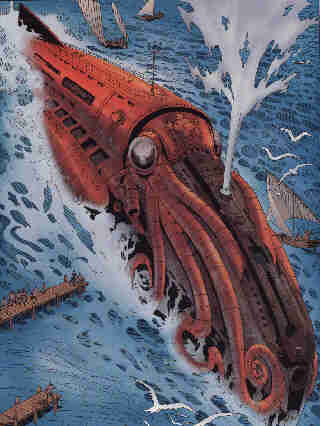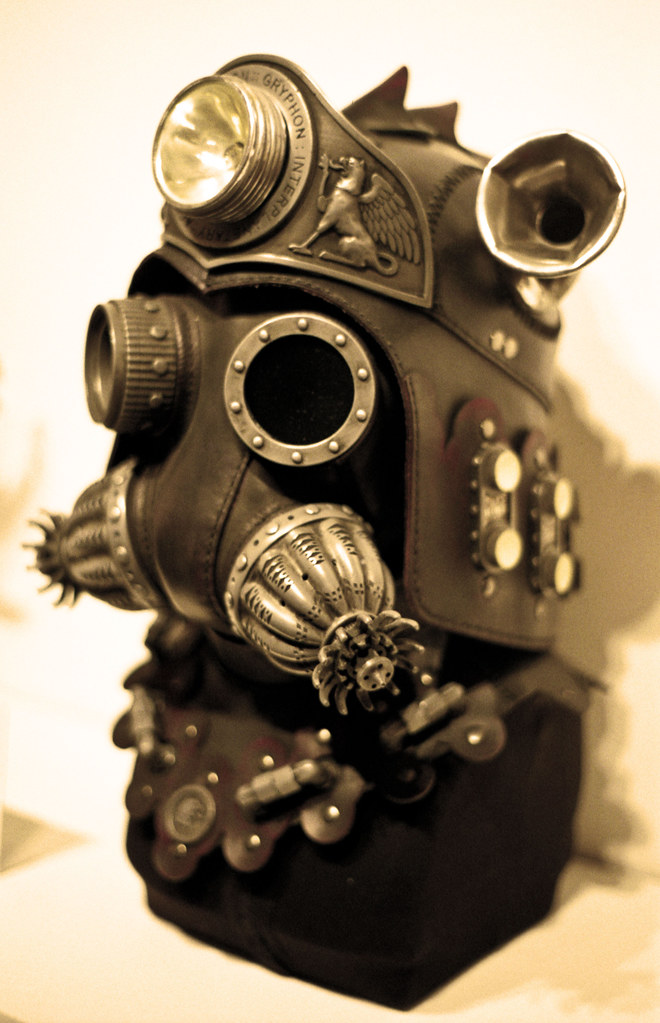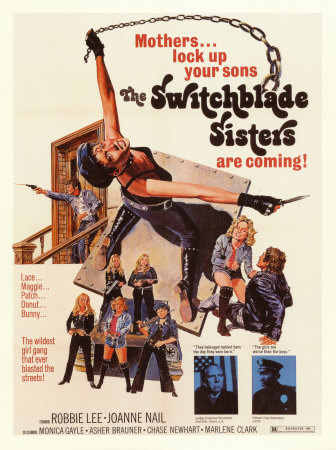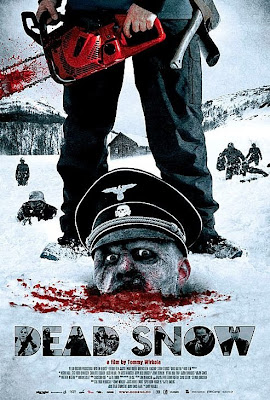
Two important punk bands from Britain's golden age('76/'77) that are also hailed for defining the sound and attitude that characterized later waves of British punk, including the more brutal, working class sound of Oi!, are
Slaughter and The Dogs and
Menace.
Both of these bands clearly draw on the American underground scene so influential to British punks, as well as more homegrown influences in the form of glam and pub-rock, and of course London's burgeoning scene.
Menace's early few singles, available on the Captain Oi! compilation (pictured), are absolutely essential punk rock classics. The snotty lyrics and buzz-saw guitar assault can be likened to the
Dead Boys, and their socially-conscious lyrics portray Britain's disenfranchised youth, politicized and angry at its dead-end factory-floor existence. Track picks include the
Stiv Bators nihilistic sneer of Screwed Up and I Need Nothing; the indispensable classics GLC (Greater London Council) with the immortal lyrics "you're full of shit!" and chant-along year-zero anthem Last Year's Youth; and a rousing rendition of
Cliff Richards' classic Young Ones, played in the way you'd think it was always meant to be.
Slaughter and the Dogs, on the other hand, wear their glam-influences on the sleeves. Their fantastic name comes from two of their favourite albums,
Bowie's
Diamond Dogs and
Mick Ronson's
Slaughter on Tenth Avenue. Early Manchester scene legends, they managed to wangle a support slot at the
Sex Pistols' Lesser Free Trade Hall gig on 20th July 1976 along with
Howard Devoto's
Buzzcocks, and thus their punk status was sealed. They play a gloriously abrassive and yobbish take on sleazy rock, with nods to the
New York Dolls and
Velvet Underground, two bands to which they pay tribute with cranked-up versions of Mystery Girls and Waiting for The Man. They shy away from explicit politics, instead hammering out some high-velocity, thrash-punk tunes. Though perhaps light on lyrical accomplishment, their songs are irresistibly good fun. Track picks include the schlock horror fun of Victims of The Vampire; a paean to the youth of yesteryear in Where Have All The Boot Boys Gone?; and the nonchalant sneer of We Don't Care.

In both these bands' thuggish swagger and uncompromising hard-punk noise lies the seeds of what later generations would declare to be the 'true punk' sound. The cockney Oi! scene gained popularity in the early 80s thanks to bands like The Business and Cock Sparrer, as well as the genre's self-appointed figurehead, tabloid hack Garry Bushell. It drew on the harder-edged street-wise sounds of the early bands, like
Menace and
Slaughter..., and considered punk to be a strictly working class expression, an outcry of society's downtrodden. Despite this claim, the later groups would often rather perversely celebrate and accentuate their lower class traits, seemingly unaware that a certain small-mindedness came with the trappings.
Sham 69, hailed as godfathers of the Oi! genre, would chant 'proud to be a cockney' at gigs and wrote stirring footy-chant anthems, full of almost comic book cockney jeers of 'oi oi' and 'awright guv'. But such innocent beginnings soon snowballed and took on a life of their own. The scene soon became a caricature, and much like other punk movements, proceeded to paint itself into a corner, constructing and enforcing its own limitations, instead of breaking down boundaries. But worse than this the Oi! scene took on a political slant very much at odds with the left-leaning revolutionary stance of their predecessors.
As the skinheads of the late 60s had learned, it was a slippery slope, especially in the eyes of the media, from expressing your self-respect and championing your working class heritage, to tattooing a swastika on your forehead and hitting the streets for "a bit of the old ultra-violence". The original Skinhead movement, with its roots in Jamaican Rude Boy culture and street-Mod style, had been defined by a sort of inclusive, working-class comradeship.

Poor black immigrants and native white skins met on the dance floor in peace, wanting nothing more than to indulge in their adoration of reggae and soul music. The newspapers as ever, out of touch with the movement's original soul, concentrated on the violent few and redefined the movement for future generations. With its love of sensation and conflict, the media took the 'paki-bashing' angle and ran with it making the skinhead something of a scape goat for society's ills. The skinheads have been demonized ever since. In a similar way, oi! which naturally appealed to street-punks and a new generation of skinheads, and therefore had to shoulder the controversies which followed such subcultures, also had public-relation problems. Punk had always had a slightly uncomfortable flirtation with Nazi-regalia and iconography. More often than not it was simply a case of shock value; a sort of childish taunting of accepted social codes, two fingers up at those outside of the scene, who didn't 'get it'.

Conversely, as the scene also had a very calculated intellectual side to it, made up of anti-art guerrillas, armchair anarchists and cultural-revolutionaries, such use of offensive imagery was seen as a post-structuralist breakdown of recognized symbols and their associated ideologies. Punks were thought to be taking the icons of the past and ripping them up, sticking them back together in dadaist collage ensembles that rendered the signs as empty and meaningless, yet knowingly mischievous as Johnny Rotten's vacant stare. "History", as Malcolm McClaren famously claimed "is for pissing on".
But Oi!, which seemed to reject such revolutionary affiliations and wanted nothing to do with the arty/intellectual side of things, inadvertently threw out the context which had made the swastika an almost acceptable token of shock. Jokey siegheils, in the context of boisterous working-class pride, inevitably took on a much more serious and ominous meaning. The fact was though that before the National Front had reared its ugly head there were just as many left wing, labour-voting skins as there were right-wing. But since racist rhetoric had gained a stronger hold, and since punk had fractured into hundreds of subcultures, now seemed to be the time to draw the line in the sand and make your allegiances clear. For Oi!, this bad press was both a curse and a blessing. Many bands who had been labelled Oi!, really wanted nothing to do with it. The
Angelic Upstarts, who enjoy considerable popularity in punk circles nowadays, were unfairly lumped into the Oi! category, and were plagued by boneheaded neo-nazis who'd come to their gigs to cause trouble. In fact, if you listen to their records, the
Upstarts can be likened to an early
Clash, and they can be credited as one of the bands that wanted to keep punk relevant in the 80s. Other bands however courted the media controversy, enjoying their time as the country's most hated. Certain stylistic choices didn't help the cause either, as Union Flag waving became de rigueur and record labels released dubiously titled compilations such as Decca's infamous
Strength Thru Oi!, which played on the well-known Nazi slogan.

Other bands such as
Ian Stewart's
Skrewdriver claimed that that was what punk had originally been about, or at least should have been; white noise for angry white youth. These bands
were Neo-Nazis, with NF connections, that positively encouraged racial-hatred and happily drew on the disenfranchised youth of Thatcher's Britain to swell their ranks. Often seen as an unfortunate outcome of the punk wars, these groups gained support from the same sort of angry young men that punk had appealed to, by promising them an easy answer. Of course these bands soon disappeared underground, but their legacy continues around the world to this day. It's a great shame that some of the most forward thinking, exciting and positive music of the punk and new wave era such as Menace and Slaughter and The Dogs, as well as the inclusiveness and soul of the traditional skinhead scene, might forever be tainted by their inescapable connection with the small-minded thugs and racists who jumped on the bandwagon. These are youth cultures which spoke to the hearts of many different people around the world, people who became energized to change their suffocating circumstances and work towards making a change for the better, be it coming together with like-minded souls, fighting for a cause or just having the guts to stand up and make themselves heard. As with most things, you have to take the good with the bad. It is to punk's merit that the open-endedness that allowed the far-right a voice in the first place, is also the very thing that allows the movement to change and grow away from its influence. By inviting the marginalized voices in and openly discussing their claims, punk betrays itself as an arena of true freedom of expression, a true democracy, in which young people are actively encouraged to question what they're given, voice their opinion and make up their own minds.


























